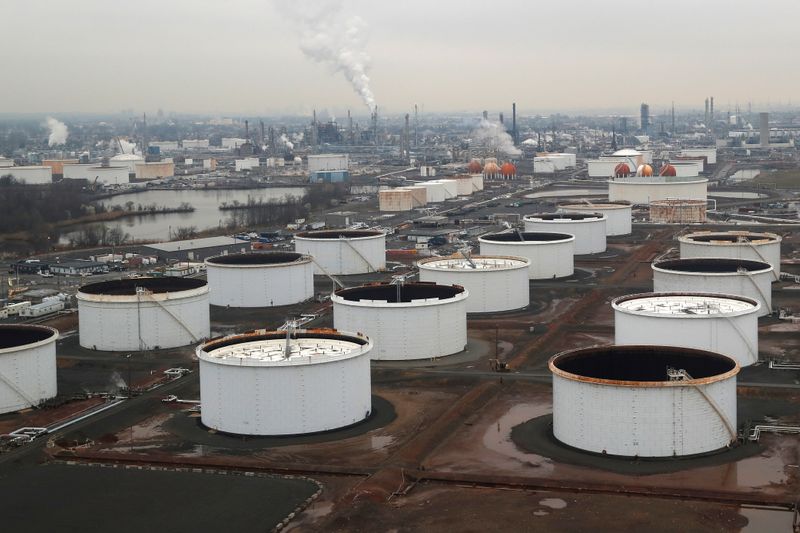NEW YORK (Reuters) – Oil prices edged higher on Thursday, boosted by a weak dollar and bullish signals from Chinese import data but pressured by renewed worries about global oil demand due to surging coronavirus cases in Europe and new lockdowns in China.
Brent crude oil futures rose 36 cents, or 0.6%, to settle at $56.42 a barrel. U.S. West Texas Intermediate (WTI) ended 66 cents, or 1.3%, higher at $53.57.
The U.S. dollar index slumped after U.S Federal Reserve Chair Jerome Powell struck a dovish tone, saying the U.S. central bank is not raising interest rates anytime soon.
A weaker greenback makes dollar-denominated oil cheaper for holders of foreign currencies.
Raising hopes of increased oil demand was a hefty U.S. COVID-19 relief package, which President-elect Joe Biden is due to unveil on Thursday.
“With energy values strengthening as the dollar weakened today, the oil market was able to advance late session in sympathy with stronger equities,” Jim Ritterbusch, president of Ritterbusch and Associates, said.
World stocks indexes climbed to record levels and U.S. bond yields edged higher on Thursday as investors focused on Biden’s pandemic aid proposal.
“Oil specific fundamentals still appear supportive enough to push the complex into new high territory within the next couple of trading sessions,” Ritterbusch said.
China’s total crude oil imports rose 7.3% in 2020, with record arrivals in the second and third quarters as refineries expanded operations and low prices encouraged stockpiling, customs data showed.
Still, the world’s second-largest oil consumer reported its biggest daily jump in new COVID-19 cases in more than 10 months.
Governments across Europe have announced tighter and longer coronavirus lockdowns, with vaccinations not expected to have a significant impact for the next few months.
The Organization of the Petroleum Exporting Countries left its forecast for world demand unchanged, saying oil use will rise by 5.9 million barrels per day this year to 95.91 million bpd, following a record 9.75 million bpd contraction last year due to the pandemic.
Oil producers face an unprecedented challenge balancing supply and demand as factors including the pace and response to COVID-19 vaccines cloud the outlook, said an official at the International Energy Agency (IEA).
Saudi Arabia, for example, is throttling oil supply to some Asian buyers, refinery and trade sources told Reuters, while Russia plans to ramp up output this year, according to Russian media.
“The Saudi cuts are priced in since last week, even a bit more than was reasonable under market conditions, and a rationalisation of prices was overdue,” said Rystad oil market analyst Bjornar Tonhaugen.
“Seeing COVID-19 infections rise in China by the largest margins in a long time is alarming for the market and, combined with strict ongoing lockdowns in Europe, may affect oil demand much more than initially anticipated in the first quarter.”
Brent’s six-month backwardation, whereby contracts for later delivery are cheaper, fell to its lowest since Jan. 5, indicating bullish sentiment easing.
(Additional reporting by Shadia Nasralla in London and Jessica Jaganathan in SINGAPORE; Editing by Kirsten Donovan, Marguerita Choy and David Gregorio)

























